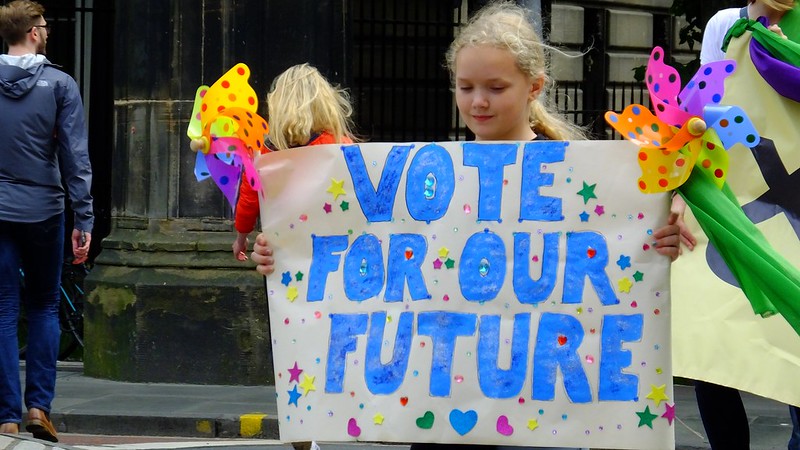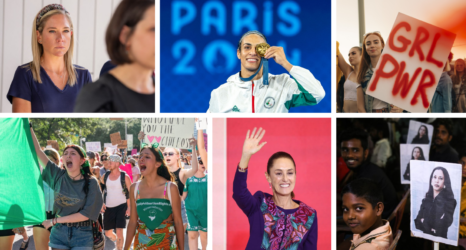The U.S. has failed to meaningfully address young people’s physical and emotional health in the last year.

What kind of “recovery” systematically fails an entire generation? What are we saying to young people about their value when their cries for economic and social justice go largely unanswered?
Young people’s continued struggle is an indictment of our “recovery.” A year ago, we knew that the COVID-19 pandemic was taking a particularly brutal toll on youth and young adults. Whether looking at unemployment, mental health or health insurance, young people were struggling.
This was on top of high poverty rates, high levels of unmet mental health need and structural inequities in employment, education and community safety that were entrenched before the pandemic. This alarming set of circumstances, coupled with racial justice uprisings across the country, demanded decisive federal action to demonstrate our national commitment to young people through transformative investments.
One year later, the portrait remains virtually unchanged. Poverty increased for young people in 2020 after years of decline. Federal programs helped to lift many people in the US out of poverty in 2020, but young people were helped at a lower rate than the population overall. Hispanic and Asian-American young people did not experience any reduction in poverty rates from these programs.
In July of 2021, one-third of young people reported that they had been unemployed at some point during the first six months of the year. Nearly half said that they had some difficulty meeting household expenses in the past month, and 1.7 million young people reported major difficulty meeting household expenses.
In July of 2020, the pandemic economic relief in the Coronavirus Aid, Relief and Economic Act of 2020 (CARES) did not reach young adults. Ninety percent of young people who were unemployed at that time were unable to access any help. This fact confirms what we already knew: Policy that does not explicitly designate young people as a priority is unlikely to reach them.
We have to do better for all young people in terms of jobs. The status quo pre-covid wasn’t good enough. We have to work together to build back better. This #YouthJobsGap research provides the clearest picture yet of employment outcomes for young people. https://t.co/EtksXy1g0c
— Eleanor Harrison OBE (@EllieJHarrison) January 15, 2021
Policy that does not explicitly designate young people as a priority is unlikely to reach them.
Young people also continue to experience an unprecedented toll on their mental health. In July of 2021, the percent of young people reporting that they experienced any level of depression was essentially unchanged from 2020. The percent of young people experiencing anxiety remained unacceptably high. Perhaps most disconcerting, more than 3 million young people reported that they needed mental health support in the last week and were unable to get it.
Add in uninsured rates that are twice the national average in the context of a global pandemic, and it is clear that we have failed to meaningfully address young people’s physical and emotional health in the last year.
Despite the strong economic recovery under President Biden, two once-in-a-generation economic downturns have made the path to the middle class difficult for many young Americans. Here’s a #WhiteHouseDeepDive into how the Build Back Better Agenda helps young people. THREAD:
— The White House (@WhiteHouse) July 21, 2021
There is still an opportunity to change course and make investments that prioritize young people. The House version of the Build Back Better Act includes:
- An over $2 billion investment in youth employment, and $1.25 billion in climate jobs for youth, including a $350 million for subsidized youth climate jobs—a proven strategy that helps marginalized young people change their long-term economic trajectory.
- Extends changes to the child tax credit—critical support for young parents—and to the earned income tax credit, which in 2022 will (finally) make a difference for young workers who do not have children or whose children don’t live with them.
- Invests $2.5 billion in addressing community violence and trauma, and $50 million in growing and diversifying the mental health workforce so that young people can find care from providers that look like them.
- Permanently closes the Medicaid coverage gap in states that have not expanded Medicaid; young people are a significant proportion of the people who are in that gap.
- Tackles environmental justice through lead pipe abatement and climate justice grants.
Young people are done waiting. Change couldn’t have come soon enough for young people a year ago. Congress must keep these provisions that explicitly direct resources to young people in the Build Back Better Act. The recovery and our nation can’t afford to fail young people for another minute.
Up next:





